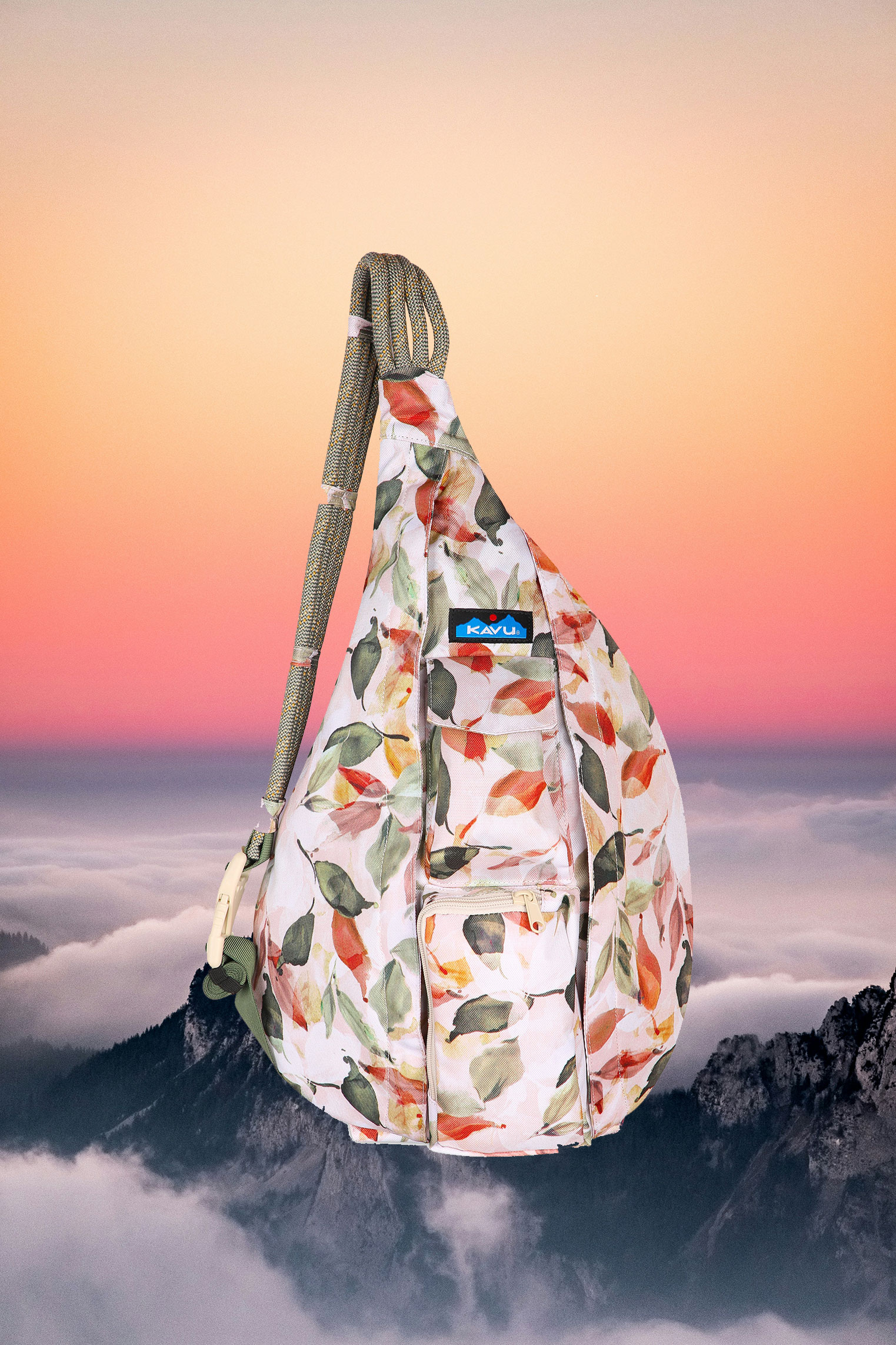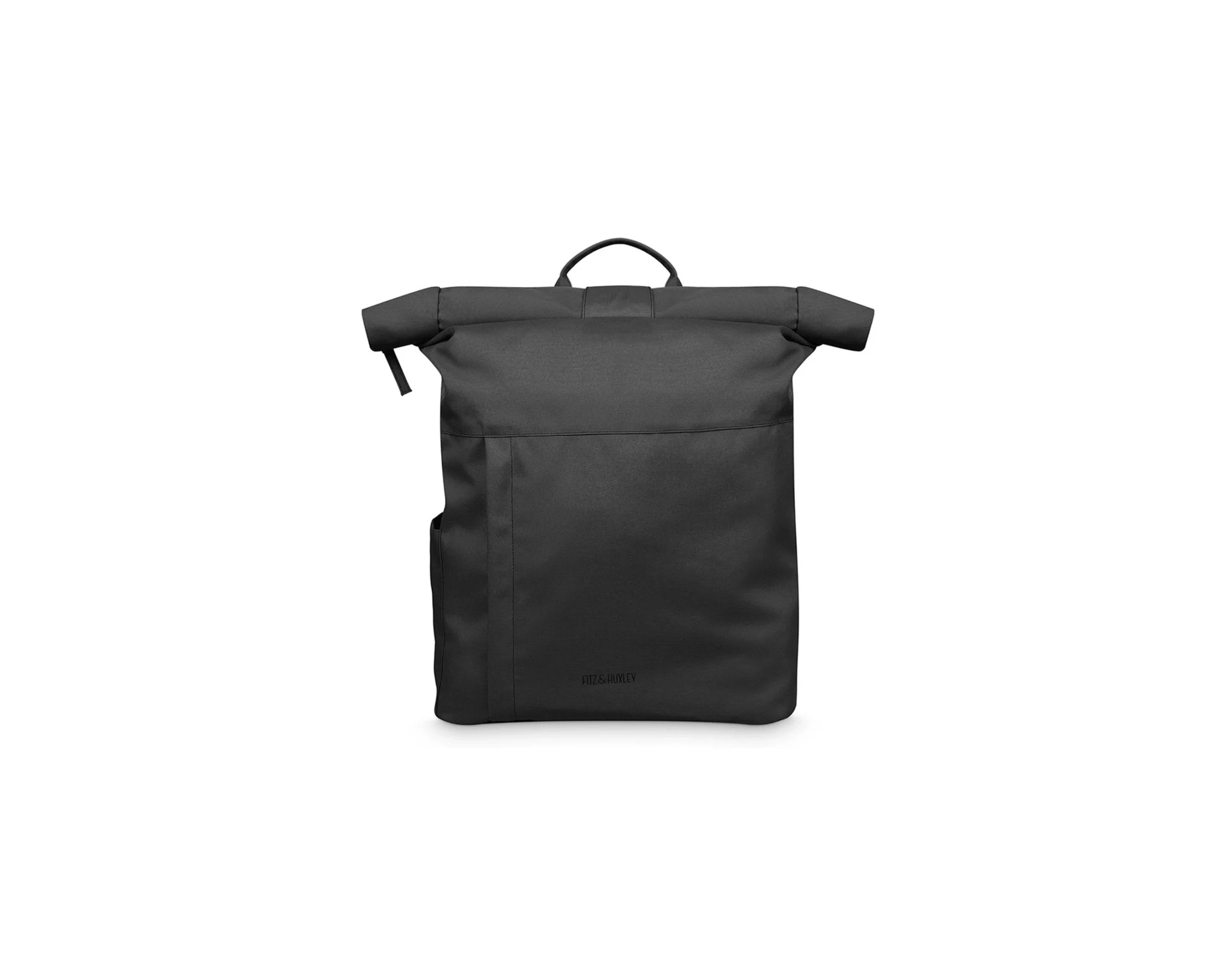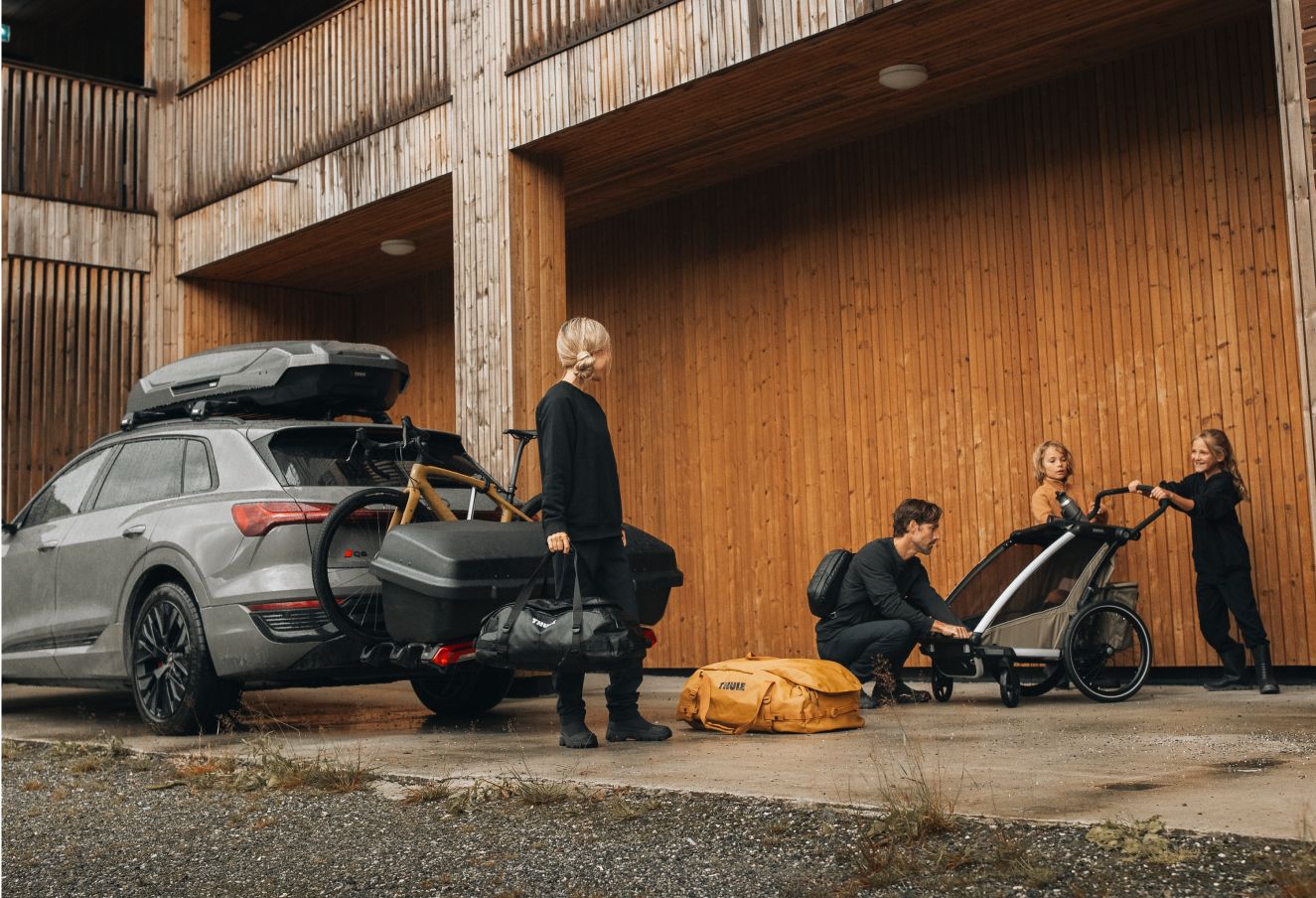Ever stops to think about how that backpack you carry every day actually comes together? Making a backpack is a cool mix of careful planning, science-y stuff with materials, and some serious skill. From the first idea to the bag you see in the store, each one goes through a bunch of steps that decide how tough it is, how well it works, and how good it looks.
In this guide, we’re checking out how backpacks are made these days. We’ll break down each part and what happens to turn basic stuff into those bags we all trust to haul our stuff around. Whether you just want to know more, dream of designing bags, or work in the business, seeing how backpacks are made shows you just how much thought goes into something that seems so simple.
Backpacks 101: What Makes Them Tick
Before we get into how they’re made, let’s talk about what a backpack really is: a bunch of layers working together. Each piece has its job, from the outside that deals with the weather to the inside that keeps everything neat and easy to grab.
Parts of a Backpack
A good backpack usually has these main things:
- Outer layer: The fabric that needs to be strong and keep water out.
- Inner frame: Things that hold the bag’s shape and spread the weight.
- Padding: Soft stuff on the back, straps, and laptop spot to keep you comfy.
- Bits and pieces: Zippers, clips, and things to attach stuff.
- Pockets: Places to keep things organized.
To make a backpack all these parts are cut, sewn, and put together carefully. It can take tons of little pieces to make just one bag!
Step 1: The Plan
Before any cutting happens, there’s a design. This is like a super detailed plan that tells the factory how to make the bag.
Making the Plan
This plan is a document to show a factory how to make a product. It says what materials to use, how big it should be, what shape it is, and all the small details. This important first step includes:
What the design needs:
- Exact sizes for everything
- What materials to use, how thick, and how heavy
- Where to put zippers and clips
- How to stitch it all together
- What colors to use
Drawings:
- Pictures that show how it all goes together
- Close-ups of how things are put inside
- How the zippers and closures work
What materials you need:
- How much fabric to use
- How many clips and zippers
- Which thread and other things to use
- What quality each thing needs to be
This planning decides how much the backpack can hold and how well it handles the weather. It’s the most important step in making the whole thing.
Step 2: Picking and Getting the Materials
What you make a backpack from decides how good it is and how it works. There’s all kinds of stuff to pick from, and each one is good for different things. You might want light stuff like Dyneema for hiking, strong stuff like nylon for rough use, or eco-friendly stuff like recycled plastic and hemp. Knowing what your backpack is made of is key.
Basic Fabrics
Outside Fabrics:
- Different Nylons:
- 210D ripstop nylon: very light
- 420D nylon: Normal strength
- 1000D ballistic nylon: Really strong
- Different Polyesters:
- Normal polyester: Doesn’t cost a lot
- Recycled polyester: Good for the planet
- High-strength polyester: Extra strong
Keeping Water Out:
- PU (Polyurethane) for keeping water away
- DWR stuff to keep water away
- TPU (Thermoplastic Polyurethane) to block water
- Silicone to make it stronger
High-Tech Materials
Backpack makers now use some crazy materials to make bags even better:
Ultra-High Molecular Weight Polyethylene (UHMWPE):
A report about new material designs in ultralight backpacks looks at how to bond materials and make super light, strong bags.
Dyneema Composite Fabrics:
- Super strong but light
- Blocks water
- Hard to tear or poke holes in
- Can make super light bags
Recycled and Planet-Friendly Stuff:
- Recycled plastic from the ocean
- Hemp for a strong, natural feel
- Plant-based coatings
- Dyes that don’t hurt the planet
Step 3: Making the Pieces
Turning the design into actual pieces means making patterns and cutting carefully. This step makes sure everything fits together right.
Digital Patterns
These days, companies use computers to make patterns that save material and make sure everything fits just right. These patterns show:
- How much extra fabric for seams
- How to line up the fabric
- Where to make marks to line things up
- What each piece is
Cutting
Cutting is a complicated process. For a complex custom backpack, there might be many pieces and materials.
Machines That Cut:
- Computer-run cutting tables for being exact
- Lasers for plastic stuff
- Sound waves for sealing edges
- Machines that punch out shapes for hardware
Making Sure It’s Cut Right:
- Checking how the fabric lines up
- Measuring to see if it’s the right size
- Looking for bad spots in the material
- Matching up pieces
Getting Ready to Assemble
After cutting, all the pieces are put into kits so the workers have everything to put a backpack together. This keeps things consistent and fast.
Step 4: Building the Frame
The frame is what keeps the backpack in shape and makes it strong.
Frame Stuff
What’s Inside:
- Aluminum or carbon fiber bars
- Plastic sheets
- Special ways to hang the bag
- Ways to spread the weight
No Frame:
- Using padding to give shape
- Sewing it in a way to keep its form
- Ways to load panels
- Straps to squeeze it tight
Back Panel
The back part of the backpack is one of the trickiest to put together:
Lots of Padding:
- Closed-cell foam to protect from hits
- Open-cell foam for being comfy
- Mesh to let air flow
- Fabric that pulls away sweat
Shaped For You:
- Padding that fits your spine
- Places to connect straps
- Ways to connect hip belts
- Air gaps for breathing
Step 5: Pockets
Backpacks have to hold a lot of stuff, so they need pockets that are made just right.
Main Pocket
Big As Possible:
- Sizing the panels to hold the most
- Making extra room with fabric
- Straps to squeeze it tight
- Easy to get in and out
Inside Pockets:
- Divider panels
- Places to put pockets
- Padding for laptops
- Quick-access pockets
Special Pockets
For Tech:
- Places to put water
- Spots for electronics
- Tool straps
- Outside pockets
How It’s Made:
- Strong edges
- Tough spots
- How the zippers go on
- Straps to connect things
Step 6: Straps
The straps are what make a backpack comfy and let you carry weight without hurting yourself.
Shoulder Straps
Different Padding:
- Hard foam for shape
- Soft foam for comfort
- Channels for air
- Foam that remembers your shape
Adjusting Straps:
- Buckles to adjust
- Straps to spread weight
- Places to connect straps
- Chest straps
Hip Belt
For big backpacks, the hip belt needs to be made carefully:
Transferring Weight:
- Hard belt
- Flexible wings
- Padding
- Buckles that adjust
Comfy Stuff:
- Ways to pull away sweat
- No pressure points
- Adjusting sizes
- Places to connect things
Step 7: Adding Hardware
This is about all the clips, zippers, and metal parts that make a backpack work and last.
Zippers
Picking Zippers:
- Flexible zippers
- Strong zippers
- Waterproof zippers
- Smooth zippers
Putting Them In:
- How the tape goes on
- Sealing the seams
- Making them strong
- Attaching the pull tabs
Clips
What To Use:
- Nylon for light bags
- Metal for strong bags
- Both for balance
- Coatings to stop rust
How To Connect:
- Stitching for strong spots
- Straps
- Strong panels
- Ways to spread weight
Step 8: Putting It Together
Sewing is what brings it all together. It makes the backpack strong and able to last a long time.
Sewing
Types of Seams:
- Strong seams
- Nice-looking seams
- Protected seams
- Waterproof seams
Special Sewing:
- Extra stitching for strong spots
- Fancy stitching for looks
- Hidden stitches for clean looks
- Stretchy stitches
How It Goes Together
There are a lot of ways to make backpacks, and most of it is still done by hand. It goes in steps:
- Make the small parts first
- Connect the main parts
- Add pockets
- Put on hardware
- Add straps
- Final touches
Making Sure It’s Sewn Right
Good Stitches:
- Adjusting the tension
- Picking strong thread
- Testing the seams
- Making it look good
Right Sizes:
- Lining up parts
- Checking the size
- Testing how well it works
- Checking the hardware
Step 9: Making It Perfect
This step is all about making sure the backpack is great and works like it should.
Cleanup
Finishing the Fabric:
- Ironing for a clean look
- Cleaning off marks
- Polishing hardware
- Adding tags
Protecting It:
- Adding more water protection
- Adding stain protection
- Adding UV protection
- Stopping germs
Testing
Testing How Strong:
- Zippers
- Straps
- Seams
- Hardware
Testing How Well It Works:
- How much it can hold
- How comfy it is
- How easy it is to get in
- How it handles the weather
Last Look
Eye Test:
- Making sure it looks good
- Colors match
- Hardware looks good
- Checking how it’s made
Does It Work?:
- Testing all zippers
- Adjusting straps
- Checking buckles
- Getting into pockets
Step 10: Getting It Ready to Sell
The last step is getting the backpacks ready to go to stores.
Wrapping It Up
Keeping It Safe:
- Dust covers
- Stuffing to keep shape
- Wrapping the hardware
- Instructions
Shipping:
- Squeezing it to save space
- Picking the right box
- Tagging boxes
- Sending to the right place
Where To Buy
Knowing how backpacks are made helps you tell the difference between brands. We’ve checked out the best ones and found great backpacks for anything you need.
Top Brands
Osprey Packs – For straps and good warranties
- Shop Osprey: Official Osprey Store
- Good For: Hiking and travel
Patagonia – Planet-friendly materials
- Shop Patagonia: Patagonia Backpacks Collection
- Good For: Outdoor
The North Face – City and outdoors
- Shop North Face: The North Face Backpacks
- Good For: Daily use
REI Co-op – Well made and good price
- Shop REI: REI Backpack Collection
- Good For: Outdoors for everyone
Arc’teryx – High quality
- Shop Arc’teryx: Arc’teryx Packs
- Good For: Mountains
Places that Sell Many Brands
REI (Recreational Equipment Inc.)
- Website: REI.com Backpacks
- Good For: Advice, selection
Backcountry
- Website: Backcountry Backpacks
- Good For: Expertise, premium brands
Amazon
- Website: Amazon Backpack Selection
- Good For: Selection, reviews
What’s Next
New Ideas
Better Materials:
- Super strong fabrics
- Fabrics that heal themselves
- Fabrics that change with the temperature
- Fabrics with electronics
Better Making:
- Printing parts
- Robots to sew
- Computers to check quality
- Making it green
Making it Green
Good For The Earth:
- No waste
- Renewable power
- Recycling
- Not polluting to ship
Good Materials:
- Plant-based plastic
- Mushrooms for leather
- Seaweed for padding
- Ocean plastic
Picking A Good One
Knowing how they’re made helps you see if they’re good:
How Well It’s Made
Seams:
- Straight stitches
- Right thread
- Strong spots
- Clean edges
Hardware:
- Smooth zippers
- Strong buckles
- No rust
- Right sizes
Materials:
- Good fabric
- Colors match
- Right material
- Water protection
How Long It Will Last
Strong Spots:
- Extra stitches
- Strong seams
- Strong panels
- Good hardware
Lasting Long:
- Good warranty
- Good history
- Good reviews
- Good tests
Takeaway
The next time you grab your backpack, think about all the work and thought that went into it!
Making backpacks is about human creativity. People mix old skills with new tech to make things that make our lives better. Whether it’s for school, hiking, or travel, your backpack is the result of years of making bags better.
Knowing how backpacks are made helps you pick good ones and take care of them. As things change, backpacks will keep getting better.
From start to finish, backpacks do more than just hold things. They’re designed to make it easier to move and stay organized. Each part has a job, making the backpack work well and last long.
#BackpackMaking #HowBackpacksAreMade #BackpackBuilding #OutdoorStuff #BackpackDesign #MakingIt #GoodBackpacks #BackpackMaterials #Gear #BackpackTech #GreenMaking #BackpackScience #OutdoorGear #BackpackGoodness #TechGear #BackpackNew #GearMaking #BackpackBiz #OutdoorGear #BackpackFacts



